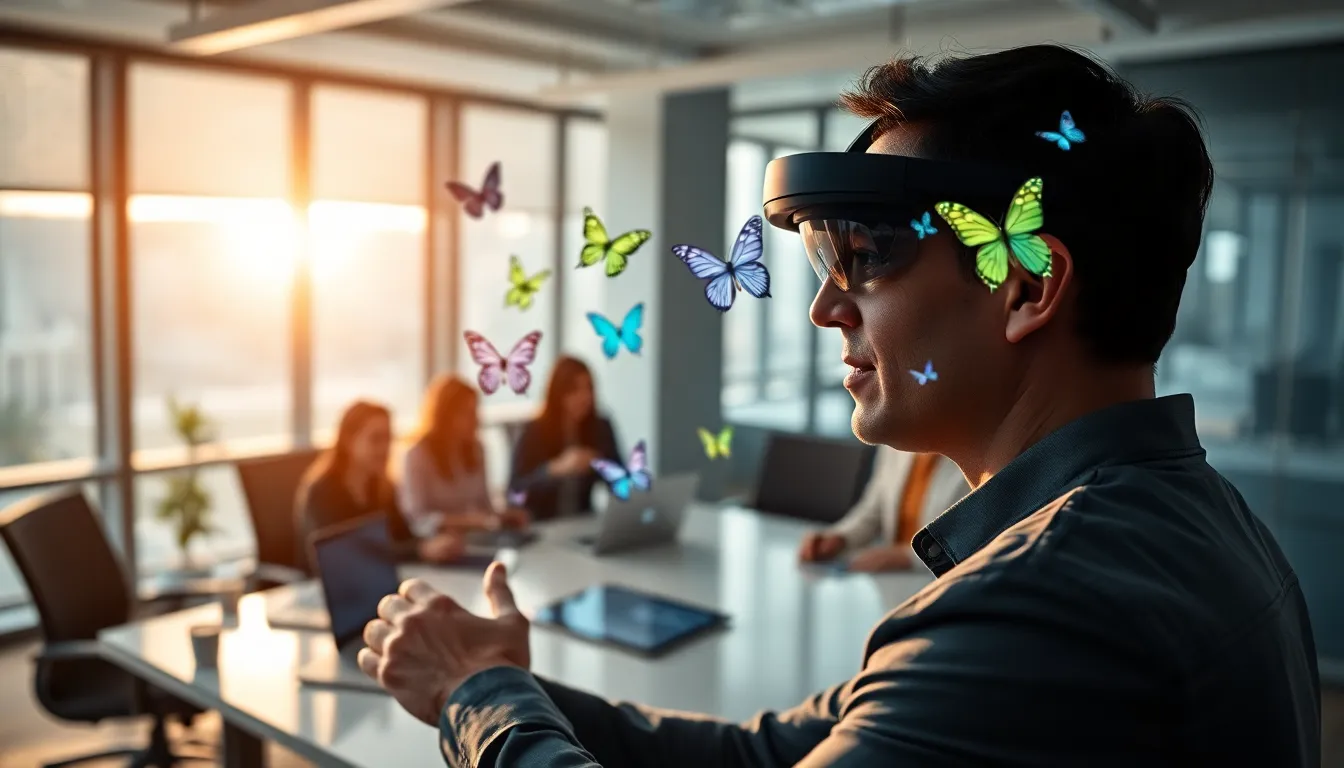Table of Contents
ToggleHave you ever found yourself wondering if Mixed Reality and Augmented Reality are the same thing? You stare at your phone, wondering why your pizza seems to be hovering in your living room. It’s a confusing world out there, and not just because your cat just knocked over the pizza. In reality, pun intended, these two technologies are changing how we interact with our environment. Let’s jump into the depths of this technological wonderland and figure out who’s who in the realm of augmented experiences.
Understanding Mixed Reality

Mixed Reality (MR) is like hosting an intellectual dinner party where both physical and digital worlds mingle together. Imagine wearing a headset that allows you to see digital objects that interact seamlessly with the real world around you. MR provides an immersive experience where users can engage with holograms as if they were part of their physical environment.
With MR, reality and virtuality blend in a way that feels almost magical. Users can interact with these digital objects using gestures and voice commands, enhancing both personal and professional experiences. Think of it as exploring a park while simultaneously having digital butterflies fluttering around you, landing on your shoulder for a casual chat, that’s the power of Mixed Reality.
Key players in the MR space include the Microsoft HoloLens and Magic Leap One. These devices create environments rich in context and interactivity, making them useful for education, design, and more.
Defining Augmented Reality
On the other hand, Augmented Reality (AR) is like the fun little cousin who throws stickers on everything, making it more colorful without changing its core. AR enhances the real world by overlaying digital information, such as images, sounds, or even GPS data, onto an individual’s view of their surroundings, all through a smartphone or smart glasses. Instead of creating an entirely new environment, AR simply adds layers of information to reality.
Popular examples of AR include the mobile game Pokémon GO, where players hunt for Pokémons in their local parks, and Snapchat filters that let users wear virtual dog ears or apply artistic filters in real time. AR empowers users to see a blended version of the world, changing how they interact with both the environment and the digital realm. The technology is being adopted in retail, real estate, and even art exhibitions, showcasing its versatility.
Key Differences Between Mixed Reality and Augmented Reality
Now that the introductions have taken place, it’s time for a little face-off between MR and AR. The primary difference lies in how these technologies manage the blend between digital and physical worlds. Mixed Reality allows for interaction with digital objects and environments as if they were real, while Augmented Reality merely overlays digital information onto the real world.
Consider it this way: in MR, you might walk around a virtual table set up in your living room and reach out to grab the digital dish: it feels as if you’re actually interacting with it. In contrast, with AR, you can see that table on your screen, but it doesn’t exist in your room, you can’t touch it. This distinction sets the stage for the applications and potential use cases for both technologies.
Also, MR typically requires more advanced equipment, such as headsets specifically designed to support the immersive experience, while AR can function on standard smartphones and tablets.
Applications of Mixed Reality
Mixed Reality is making waves in several fields, showcasing its practical applications in everyday life. In the education sector, for instance, MR allows students to explore complex scientific concepts by interacting with 3D models of molecules or organs. Imagine a biology class where students can examine the heart in virtual space, allowing them to visualize structures and functions more vividly.
In architecture and design, Mixed Reality tools enable professionals to visualize how a building will look in its environment before construction even begins, saving time and resources.
The gaming industry isn’t left out either. Titles like HoloLens’ Halo Recruit offer experiences where players can battle aliens in their actual living spaces, cementing MR’s place as an exciting new frontier of interactive entertainment.
Applications of Augmented Reality
Augmented Reality has also found its niche, and the applications are budding rapidly. In retail, AR provides customers with the ability to try on clothes virtually before making a purchase, a game-changer for online shopping. IKEA even has an app where you can visualize how furniture would look in your home before calling the movers, no more guessing games.
In tourism, AR can enrich experiences by offering historical information and digital re-creations of landmarks. Imagine standing in front of an ancient castle, and through your AR glasses, you see the building as it originally stood centuries ago. It’s not just about taking a selfie anymore: it’s about capturing the full story.
From health care, where AR helps surgeons visualize the anatomy of patients in real time, to training simulations in various industries, the versatility of AR continues to demonstrate its potential and power.
Future Trends in Mixed Reality and Augmented Reality
The future of both Mixed Reality and Augmented Reality seems brighter than a kid on Christmas morning. As technology continues to advance, we can expect to see even more sophisticated applications of MR and AR in our everyday lives. Developers are striving for deeper integration with Artificial Intelligence, allowing for smarter interactions and more contextual information to be displayed in real time.
The rise of 5G technologies will also play a significant role. Faster download speeds and lower latency will enhance the experience, making the applications even more seamless. Picture this: attending a concert where AR overlays additional visuals that enhance your experience without any lag. Sounds dreamy, right?
In business, mixed reality platforms are becoming increasingly important for collaboration in remote environments. Imagine teams around the globe meeting in a virtual space where they can share three-dimensional designs and interact as if they were in the same room, this isn’t science fiction: it’s the future.




